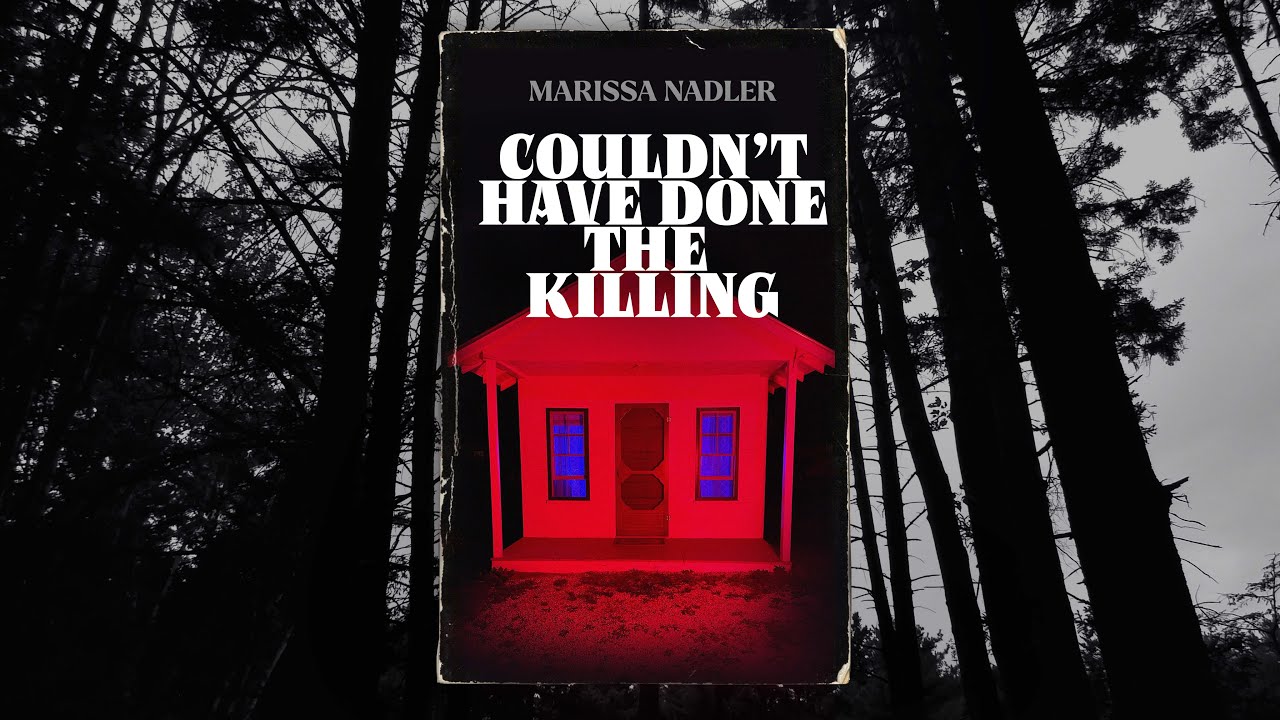The crepuscular music of American songwriter Marissa Nadler has travelled various realms. Through a discography that stretches over two decades, she has moved from confessional folk noir referencing gothic novels and Chilean surrealist poetry to observant cinematic compositions that suggest a creative kinship with Jim Jarmusch. The sense of time in Nadler’s world is not necessarily measured by the change of seasons or personal circumstances, though the latter does play an essential role in her songwriting. It feels as if the artist has a time machine or has lived a centuries-long life. While her earlier releases are haunting, bucolic and lyrically enigmatic, more recent works maintain a sense of intrigue that might befit a crime series.
The evocative nature of Nadler’s music partly comes from her background. Her first official album Ballads Of Living And Dying was recorded while the artist was at the Rhode Island School Of Design, and from its monochrome artwork that evokes the stories of William Faulkner to the howling-wind ambience on opener ‘Fifty-Five Falls’, the album has a strong visual aesthetic. There is also an element of folk music that can be read between the notes and vocal lines, a tapestry in which Appalachian songs are interwoven with Eastern European traditional melodies, while the influence of like-minded visionaries such as Leonard Cohen, Bob Dylan, Neil Young, and Joni Mitchell, can be identified in the background.
With The Saga Of Mayflower May, her second album on Eclipse, Nadler caught the attention of New York-based Kemado Records, leading in turn to Songs III: Bird on the Water. The label’s subsidiary Mexican Summer was later named after one of the songs from this album. While Nadler’s first three records had been stripped down, however, her fourth, Little Hells, embraced electronic experiments. Here, gothic songs are clad with lush and dreamy arrangements supervised by Chris Coady, also a producer on Beach House’s Teen Dream and Thank Your Lucky Stars.
Little Hells, however, was the final chapter of Nadler’s collaboration with Kemado. Her departure from the label also marked a transition from dark romanticism toward a mature and self-assertive tone on her later albums. “Then they dropped me from the record label named after my own song – that was really tough”, Nadler tells tQ. “I’m totally over it now, but that marked a definitive moment. That was why I decided to start my own label – Box Of Cedar”. Named after a song from Ballads Of Living And Dying, the label provided space for artistic healing, while also proving that Nadler could deftly navigate both the creative and business-based sides of her career at once. The funds for her fifth and self-titled record were raised through a Kickstarter campaign.
Despite her disillusionment with the wider music industry, a turning point came when Nadler was contacted by both Sacred Bones and Bella Union. “At that time, I was working as a special needs arts teacher in Massachusetts”, she recalls. “I remember I was on my lunch break at work and saw these two emails. Both labels were interested in putting out my record; that’s why I still keep Sacred Bones in the US and Bella Union representing me outside of America. That reinvigorated my self-esteem. I believed that my songs were worth putting out. Artists are not immune to being knocked off. You need to believe in yourself to put your music out there”.
Starting from 2014, the string of releases that followed, July, Strangers, For My Crimes, The Path Of The Clouds and now New Radiations, present Nadler as we now know her, twilight-y, enchanting, observant. The 10 songs she’s selected below as a guide to her discography, however, also show other sides of her strange world. “It’s hard to sum up 20 years of your life and career,” Nadler admits. “But that’s why I really thought about this in terms of what songs I still like after all these years”.
‘Hay Tantos Muertos’, from Ballads Of Living And Dying (2004)
During my first record, I wasn’t sure that anybody would hear the album. I recorded it when I was still in art school and really didn’t intend on having a music career. I really love Pablo Neruda, and I was pretty adventurous and took an excerpt from a longer poem called ‘Hay Tantos Muertos’ [‘There Are So Many Deaths’]. I don’t know if today I’d have the guts to do it, but when you are young and you are precocious, a thing like taking the poet laureate’s tome and putting it to music is something twenty-something Marissa would do. I still like it. When I went to Chile recently, which was my first concert in South America ever, people liked the song, and I sang it live for the first time in many years. They said the accent sounded good!
‘Old Love Haunts Me In The Morning’, from The Saga Of Mayflower May (2005)
I made the second record shortly after the first one. I was living in New York City and teaching full-time in Harlem and had classes with like 35 kids in each of them. I was still tapped into this mythical thing, even on the second record, creating these woeful, tragic things I had experienced in my very first heartbreak. So the entire second record is me being sad about that, taking it to the extreme with the dramatic lyrics. I’ve always been kind of old-fashioned, and that second record evokes something older, tapping into a genetic memory kind of thing – I have an Eastern European background, my ancestors came over from what is present-day Ukraine to escape religious persecution in the early 1900s. I think this is definitely not an American-sounding record. There is a prevalence of the minor keys.
‘Diamond Heart’, from Songs III: Bird on the Water (2007)
It’s the song that many people really gravitated towards from that record. The lyrics are more specific. This, as well as ‘Thinking Of You’, is still informed by that first heartbreak of my life; it really lingered for a while. The third record was when a lot of people heard of my music. It was my first record on a real record label [Kemado]. I recorded this album with Greg Weeks from the band Espers. With this song, I was definitely going to show vulnerability. I think it remained in my music across the years. I think it’s an important thing, especially with confessional music.
‘Mary Come Alive’, from Little Hells (2009)
Little Hells is the first record I had with a producer, Chris Coady, who produced Beach House, hence the sound. It’s a very New York record; the production is very different. It marks a turning point where I start to get more dreamy. ‘Mary Come Alive’ was very controversial at that time, for me at least. People were puzzled – an electronic drumbeat on a Marissa Nadler record? The drummer on that record is Simone Pace from Blonde Redhead. So again, a very New York vibe. Chris Coady was a little of a Phil Spector type, and Kemado Records were excited about me at that time. I had never played to a drumbeat before, but I really did like the way this song changed, ‘cause my demo was much more stripped down. In my early work, I used these lyrical devices to talk about myself, so Mayflower May or Mary, they are similar to Marissa in a way. I’m almost talking to myself or imagining myself in another time.
‘Baby, I Will Leave You in the Morning’, from Marissa Nadler (2011)
A lot of the early work is A – B musically, verse-chorus-verse-chorus. This has several key changes; it’s just a different type of song for me. I still like it. The female character is now taking control, whereas I’m woefully lost and alone on that early work. There is a sense of power in that lyric which is very different from, for example, ‘Thinking Of You’ or ‘Diamond Heart’ where I’m heartbroken, now I’m the one holding the reins in my life.
‘Was It A Dream’, from July (2014)
I chose ‘Was It A Dream’ because the production on that song is, I think, killer. I had my first true heartbreak before writing that record. So the whole album is like waking up after a very bad time. Randall Dunn, who worked with Sunn O))), produced that record in Seattle. It’s my first song with a string section, Eyvind Kang plays on that record. He is one of the best viola players in the world. I love the bridge and the instrumental arrangement of that song. One of my all-time favourite bands is Pink Floyd, and this song has a Floyd-y kind of vibe.
‘Janie In Love’, from Strangers (2016)
The second record I made with Randall, and this one has even more production on it. It’s the first record where I met my new partner, Milky Burgess. I met him while making this record. Again, going back to Mayflower May, I’ve liked having a ton of female characters – I think I’ve counted, and there are almost like 25. I wrote it inspired by a friend who would just fall so heavily in love. The lyrics are so hyperbolic. I’ve been working on a book of drawings – I’m still very immersed in my visual artwork, I’ve realised how many characters I have and thought it would be a very interesting book.
‘Blue Vapor’, from For My Crimes (2018)
For My Crimes features tons of guest stars like Sharon Van Etten, Angel Olsen and harpist Mary Lattimore. I purposefully asked a whole ton of women to play on this record. Dana Colley from Morphine plays the saxophone, but mostly it’s a female energy. ‘Blue Vapor’ is kinda grungy; it really shows a different side of my influences. I grew up in the 90s, so I was super into grunge music. I was in a punk girl band and had short pink hair. I loved Hole and Pretty On The Inside was my favourite record. I wish I had recordings of this because I could scream like nobody’s business. My mother was like, “I cannot handle you listening to this anymore”. Both of my parents are old hippies; they love music, I was brought up on classic rock and prog rock. My first concert was Procol Harum. Eventually, [my mother] bought me Joni Mitchell’s Blue. At the same time, I discovered Leonard Cohen through the Nirvana song, ‘Pennyroyal Tea’. My boyfriend at that time turned me on to Mazzy Star and Black Sabbath. All these influences got me into more beautiful music, though I still like those Hole records; I would defend her still.
‘Couldn’t Have Done The Killing’, from The Path Of The Clouds (2021)
The Path Of The Clouds, which I call my pandemic record, is the first one I produced myself. I was watching a lot of Unsolved Mysteries, so I eventually started taking notes on episodes. Each record of mine has different writing prompts. Most songs on the record address the people from the series, like Alcatraz escapees and disappeared couples. It was also really interesting writing about other people. On ‘Couldn’t Have Done The Killing’, there is no specific reference, though. It’s just me putting myself in the mindset of a character from one of those series.
‘New Radiations’, from New Radiations (2025)
I feel like it’s my slowest and saddest record, which was self-produced as well as the previous one. The inspiration for this was reading about the first people to fly around the world, and the first women in outer space. I think the record is mostly concerned with distance and time passing. On ‘New Radiations’, there is a reawakening happening, kind of emerging from a cocoon, a metamorphosis. The song deals with what is going on in the world right now without explicitly spelling anything out. It’s been a really dark time in this country and other places in the world. You don’t have to dig too much to find the meaning of that song, which is about trying to emerge from that darkness. There is a kind of Western vibe to it for sure. And a glimpse of hope, too.
Marissa Nadler’s new album New Radiations is released on 15 August via Bella Union in the UK and Europe and Sacred Bones in the US






